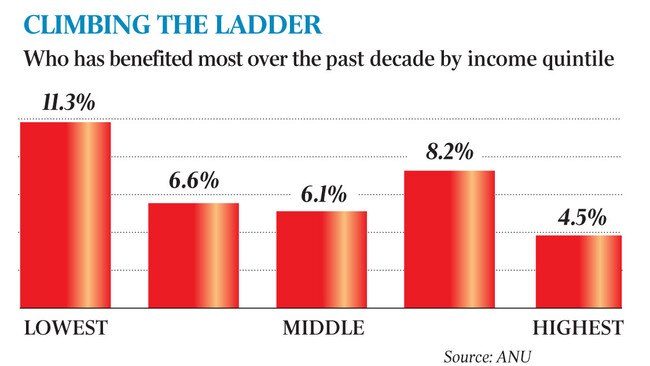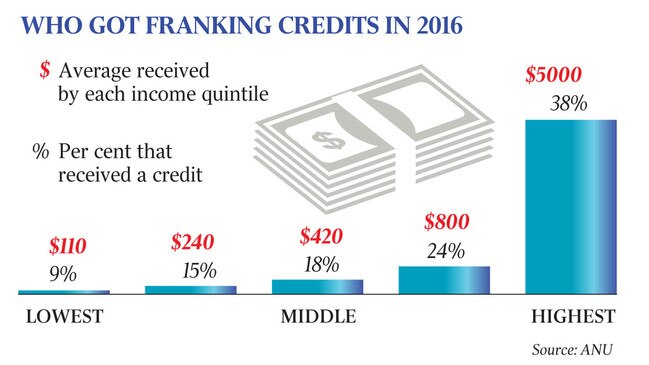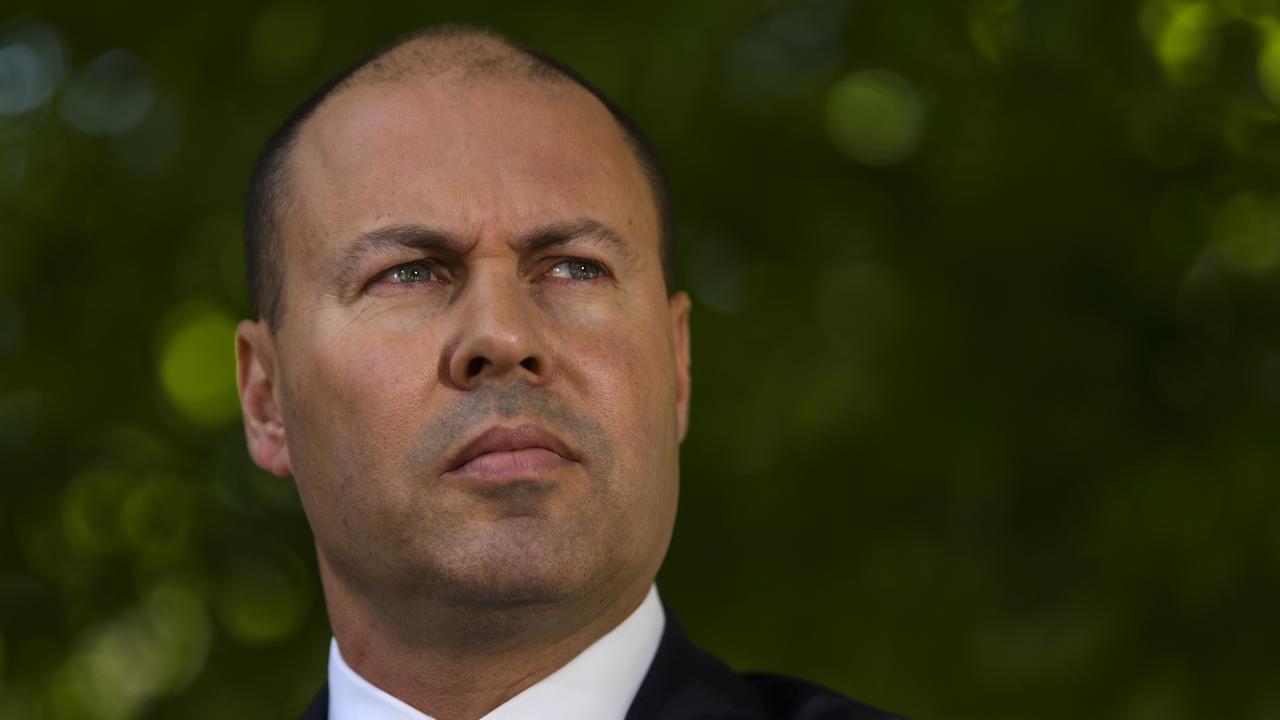Bill Shorten’s ‘left behinds’ actually got ahead
Challenging Bill Shorten’s inequality claims, analysis shows low-income households have enjoyed the biggest boost since the GFC.

Low-income households have enjoyed the biggest improvement in standard of living since the financial crisis, challenging Bill Shorten’s claim that inequality is rising and large parts of society are being “left behind”.
The bottom fifth of households ranked by income have had an 11 per cent rise in their living standards since 2007, more than twice as fast as those in the top income group, according to analysis undertaken at the Australian National University Centre for Social Research and Methods.
A comprehensive analysis of more than 20 different household types found those with incomes made up mainly of social security benefits have enjoyed an 18 per cent jump in living standards since 2007, wage earners enjoyed a 5 per cent jump and those with mainly business income recorded an almost 8 per cent fall.
The analysis, produced by researcher Ben Phillips, also shows that even the 20 per cent of households on the lowest incomes received on average $110 a year in franking credits in 2016, highlighting the political difficulty Labor faces as it seeks to end cash refunds for franking credits for all taxpayers. “Some low-income households do receive them but they are quite small in the scheme of things, with almost 80 per cent by value going to the top share of households with large portfolios,” Mr Phillips said.

The figures come amid an escalating battle between the government and opposition about the impact of Labor’s new policy, which the government says will hurt more than a million shareholders, mainly low-income retirees, and have far-ranging unintended consequences.
In a bid to tackle what he described as “the growing inequality in this country, the growing wedge of disparity”, Mr Shorten announced plans to scrap cash refunds for tax credits on franked share dividends for those paying no income tax, saying it would save $59 billion over 10 years.
The value of the tax increases combined would provide Labor with a war chest to cut personal income tax for workers, most of whom have experienced zero real wage growth since 2012.
The ANU analysis found that 9 per cent of households in the bottom income quintile received franking credits. The average payment received by that 9 per cent was $1250, with a median payment of $231. Among top-earning households, 38 per cent received credits. Among that group of households, the average payment was $13,300 and the median payment was $870 in 2016.
Mr Phillips said all types of households had “overwhelmingly” enjoyed large increases in their living standards over recent decades, while high-income households had seen “virtually no real growth in living standards since the GFC”.
His new research is based on a series of biennial income and expenditure surveys conducted by the ABS of up to 30,000 people.
Labor has announced a controversial swag of tax increases on trusts, high-income earners, multinationals and property investors in recent months. “In 2018, my side of politics is going to lay out our vision for that Australia — fairer, stronger, more inclusive — where no one gets left behind,” Mr Shorten said in January, echoing language used by British Labour leader Jeremy Corbyn.

Mr Phillips’ analysis provides a clearer picture of changes in living standards for different groups by comparing disposable income (after tax) with the cost of living. The lowest earners, who tend to spend more of their incomes on essential services, had experienced the biggest cost-of-living increase — 25 per cent since 2007 — but incomes, propped up by a hefty increase in the age pension in 2009, had more than kept pace.
Single, middle-income households aged 50 to 64, in Queensland and South Australia, appeared to have done the worst over the past decade. Single parents with a mortgage, living in ACT or NSW, appear to have done the best, relatively, the analysis suggested. “Middle and higher-income single parents did particularly well over the long term with a strong increase in workforce participation, helped along by changing cultural attitudes and increases in family payments as part of the Hawke government poverty-alleviation measures,” Mr Phillips said.
When grouped according to age, households over 65 enjoyed the most rapid growth in living standards, up 16.5 per cent or almost three times that of those under 35 over the past decade.
“The main driver here has been a more generous taxation system for older Australians and large pension increase in 2009 under the Harmer review,” he said.
The new analysis reveals how previously booming resource states were now struggling. Western Australia was the only state or territory where households went backwards since 2007 while Queenslanders’ living standards rose 1.2 per cent — masking sharp surges and retractions in income. By contrast, real incomes in the ACT and the NT, which have relatively large government sectors, rose 14 per cent and 11 per cent, more than any others.
Against a backdrop of sluggish wage growth and high house prices, Mr Phillips showed living standards for all Australians had still risen substantially since the last recession in the early 1990s.
“A key point is that overall living standards, which are defined as income growth adjusting for cost of living, have increased dramatically since 1988, rising around 68 per cent, ” he said.
He noted they had risen more slowly in the past decade.
“Lower-income single parents have not fared so well over the past decade following cuts to welfare payments by the Howard government in 2005 and Gillard government in 2013,” he said.








To join the conversation, please log in. Don't have an account? Register
Join the conversation, you are commenting as Logout